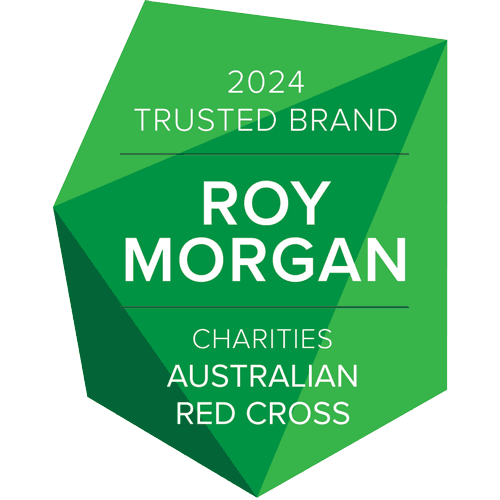Tracing: restoring family links
Notes for teachers
In its Centenary year (1914-2014) Australian Red Cross hopes that many Australian secondary students will be introduced to one of the earliest and most fundamental International Red Cross and Red Crescent activities: tracing the wounded and missing in war, and restoring communication between divided families.
Purpose and direction of study
Australian Red Cross, as a newly established branch of the British Red Cross Society, began bringing home news of wounded, missing and captured (POW) Australian personnel in the early years of World War I. From Gallipoli and Egypt to the battlefields of the Western Front, Red Cross provided communication to and from home, and assistance, particularly in the form of relief parcels, for those in captivity. Much of this history is contained within the extensive case files of Miss Vera Deakin and Miss Elizabeth Chomley, two outstanding contributors to the early operations of Australian Red Cross. Their records are archived in the Australian War Memorial and serve as a tribute, a reminder and a lesson.
With this historical foundation, the unit of work goes on to introduce students to the many search avenues that Australian Red Cross staff employ to find missing persons today. Although the technology has been revolutionised since World War I, the success of Tracing still lies in the vast communication networks of the Red Cross internationally, and the trust long-placed in Red Cross' Neutrality.
The Tracing function has continued, unbroken, for 100 years. In 2014 Australian Defence Force (ADF) members can communicate independently with their families from overseas. The ubiquitous internet means the 'home-front' is closer than ever. Rather the Australian Red Cross Tracing Service today focuses on assisting those civilians separated by disaster, armed conflict and migration.
The inherent right of individuals to know the fate of the relatives from whom they are separated is outlined in the Geneva Conventions. Under this area of law Australian Red Cross has the mandate to find the missing and to re-establish lines of communication.
Note of caution
Teachers should already be aware that some of their student community may have personally experienced armed conflict and the loss or disappearance of family. Please handle this issue and the related activities with sensitivity.
At the same time, students are actively encouraged to identify and engage with the emotional and physical impact of separation on the families involved. It is hoped they will gain new empathy for refugees/asylum seekers in general, and specifically for some of their newly arrived school mates who know this trauma only too well.
Relevant subject learning areas
This unit could be included within school learning areas such as: History and Geography (as below, with Australian Curriculum codes), but also Legal Studies, International Studies, Studies of Society and Environment (SOSE), Global/Current Affairs, and Media Studies or Communications.
Australian Curriculum links
Knowledge and understanding
ACDSEH095 - The places where Australia fought & the nature of the warfare during World War One, including the Gallipoli campaign
ACDSEH096 - The impact of World War 1, with a particular emphasis on Australia (such as the changing role of women)
ACDSEHI44 - The waves of post World War 2 migration to Australia (including the influence of significant world events)
ACHGK081 - The role of international and national government and non-government organisations' initiatives in improving human wellbeing in Australia and other countries
General capabilities
- Literacy
- Critical and creative thinking
- Personal and social capability
- Ethical understanding
- Intercultural understanding
Recommended ages
The unit is designed for those in middle school years (8-10).
Timing
The following are approximate timings. Allow minimum one 40 minute period for the background to Red Cross Tracing work; another 40 minutes for the study of World War I or contemporary times; and further time if teachers opt for design of posters.
Resources
Tracing: Restoring Family Links
Powerpoint presentation 17 slides - with brief speaking notes for each
Starter Reading
Three documents which give essential information/context to brief teachers, but they may also be used as student handouts.
Two blocks of Explore - Research, think, do
These are our options for class activity and engagement.
All students are given background to the Red Cross internationally and how the organisation became involved in Tracing in the 19th century. Teachers would add Exploration 1 to this to focus on the early history of Australian Red Cross and Australians in World War 1.
Exploration 2 looks at the current Australian Red Cross Tracing Service, bringing assistance to people displaced by war and disaster and seeking refuge and asylum. The general introduction plus Exploration 2 are the ideal combination for Geography, SOSE and for students learning about contemporary global affairs.
Both Exploration 1 and 2 have the option of a creative project.
Web links
International Committee of the Red Cross (ICRC) and Restoring Family Links
Explore - Research, think, do
The beginnings of Tracing
Discussion
Begin by asking students whether they know of a family member (past or present) lost/separated/missing, for whom Red Cross has searched. What were the circumstances? What was the outcome? It is highly possibly that someone in the class group has a story and personal connection to this topic.
Input
- Use Starter Reading: The beginnings of Tracing
- PPT Slides 1-5
Exploration 1: Australian Red Cross Tracing in World War 1
- Use Starter Reading: Australian Red Cross Tracing in World War 1
- PPT Slides 6-9
- Exploration 1 Research ideas and poster design
Exploration 2: The Australian Red Cross Tracing Service today
Charity donations of $2 or more to Australian Red Cross may be tax deductible in Australia. Site protected by Google Invisible reCAPTCHA. © Australian Red Cross 2025. ABN 50 169 561 394
